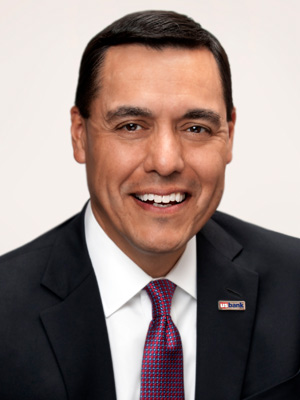Stories
T+1: One less settlement day = giant leap for faster trades
Jeff Kerr, co-head of U.S. Bank Global Corporate Trust and Custody, shares his perspectives on what this required regulatory change means for everyone in the custody chain

While the term “T+1” might not mean anything to most bank clients, it’s a hot topic among securities professionals, with a seismic effort taking place right now in the financial industry.
The U.S. Securities and Exchange Commission (SEC) and the Canadian regulatory authority adopted the rule to shorten the securities settlement cycle. The move to trade date (T) plus one day (T+1) is confirmed for May 28, 2024 for eligible U.S. securities transactions that settle at the Depository Trust and Clearing Corporation (DTCC) and May 27, 2024 for Canada.
Jeff Kerr, co-head of U.S. Bank Global Corporate Trust and Custody, recently shared his perspectives on what this required regulatory change means for everyone in the custody chain, and how U.S. Bank is preparing and helping our clients prepare.
What is T+1?
T+1 is a change to the securities settlement cycle in U.S. and Canadian markets. Securities settlement cycles have evolved in the different regions over time. In 2017, the U.S. moved from trade date plus three business days (T+3) to trade date plus two business days (T+2). With T+1, regulators are further reducing the settlement cycle by one business day.
This move impacts any client or individual that trades DTCC-eligible securities, as well as clients trading in the Canadian market. If you have a brokerage account today and purchase or sell a U.S. equity settling at DTCC, you won’t see the trade or cash settled in your account for two business days after it is booked. After May 28, shares or cash will be available in your account after just one business day (T+1).
Why move to T+1?
As settlement cycles shorten, it helps reduce risk and increase efficiencies. T+1 is also expected to lower credit and counterparty risk, particularly during periods of high volatility, as well as moderate liquidity, margin and capital requirements.
At what cost?
With one less day to settle, any manual processes will now require automation to settle trades faster. This comes at a cost to the financial industry. The SEC estimates implementation costs of almost $5 billion for the industry as firms look to technology to automate.
What is the impact to clients?
Removing one settlement day makes a huge difference to clients and market participants; with one less day in the process, many of the critical functions that could historically be performed manually will need to be automated for efficiency.
As a custodian, we’ve approached T+1 readiness in the following areas: operations, systems and technology, and client engagement. From an operations, systems and technology perspective, functionally, we’re ready. On the client front we have an outreach program in place to inform best practices for readiness as well as further advance mutual workflows, with an eye toward efficiencies and risk reduction.
What about the European Union (EU) and the U.K.?
Europe is still on the T+2 settlement cycle for the foreseeable future. There’s a lot of discussion around what will happen in the EU and the U.K., as they will continue to be misaligned with U.S. and Canada until a change occurs. We’re keeping a close pulse on this scenario with our industry colleagues and association groups such as ISITC and the International Securities Services Association (ISSA). When the time is right, we’ll collectively leverage the North America T+1 playbook and lessons learned from its launch.
What are the risks to a client failing to settle within T+1 come May?
There are risks to clients if they do not comply with the new, shorter settlement cycle, including higher costs and negative impact to reputation. Failing trades or delayed securities lending recalls may lead to buy-ins, overdrafts or interest claims. Trades that require funding or foreign exchange could present liquidity challenges if details of the execution are not communicated in a timely manner.
As technology advances is T+0 next?
As we approach T+1 in the U.S. and Canada, other markets are assessing what is the next for the settlement cycle. Looking ahead, getting to same-day settlement (T+0) will require further automation, but it’s certainly possible, and one that the financial industry is anticipating. It will require a deeper dive to understand settlement processes end-to-end, determining where there is more opportunity to automate, and perhaps utilizing technology that is not yet widely adopted or lacks a regulatory framework, e.g., instant settlement, distributed ledger technology and blockchain. Until then, we’re all working together to ensure the transition to T+1 is a success.
Media center
Press contact information, latest news and more
Learn more
Company facts, history, leadership and more
Work for U.S. Bank
Explore job opportunities based on your skills and location
